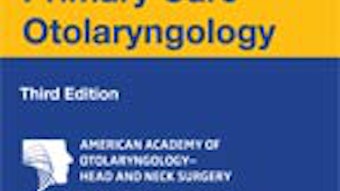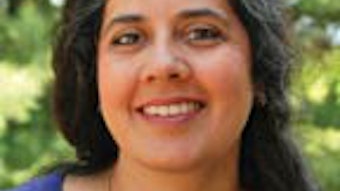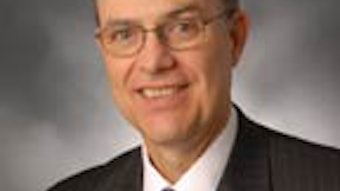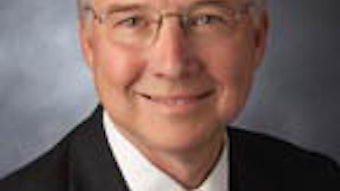CMS Restores Previous Supervision Requirements for Videostroboscopy and Nasopharyngoscopy
On July 18, 2011, the Centers for Medicare and Medicaid Services (CMS) officially notified the Academy that it had restored the previous supervision requirements (i.e., no supervision level assigned) for Videostroboscopy (31579) and Nasopharyngoscopy (92511) when performed by speech language pathologists. In a March meeting with CMS, Academy representatives made it clear that we support direct supervision. Background of SLP supervision level changes Effective January 1, 2011, CMS changed the supervision level for speech and language pathologists (SLP) who perform procedures using CPT code 31579 (Laryngoscopy, flexible or rigid fiberoptic, with stroboscopy) and code 92511 (Nasopharyngoscopy with endoscope) from the previous level of supervision (no level assigned) to personal supervision. CMS made this change in the Medicare Physician Fee Schedule Final Rule CY 2011 without publishing notice of the change in the proposed rule, which would have allowed for public comment. The Academy published the physician supervision change in The News and as a result, began receiving communications from many of our members, from all of the regions in the country, stating their concerns about how this change would negatively affect their practices and their ability to serve Medicare patients. After careful consideration of AAO-HNS members’ concerns and best interests, the Academy arranged to meet with payment representatives from CMS. On Thursday, March 31, 2011, representatives from the AAO-HNS along with the American Speech and Hearing Association (ASHA) met with CMS officials at their headquarters in Baltimore, MD. CMS was provided with two journal articles co-authored by otolaryngologists and speech language pathologists and an Academy position statement addressing these services.1 The Academy representatives made it clear that we support direct supervision and not general supervision, meaning the physician is available, but not necessarily on the premises. Both organizations strongly urged CMS to change the supervision requirement from personal to direct supervision—that is, the physician must be “immediately available” but not necessarily in the room while the procedure is being performed. Both societal representative groups were cautiously optimistic that CMS would make the requested change. CMS indicated that if a change were to be made, it would appear in the July proposed rule or the October quarterly CMS update 2011. In early July, the Academy became aware of a letter sent to U.S. Sen. Susan Collins, (R-ME), from Administrator Donald Berwick, MD2 stating that the supervision level would be removed from the two procedures. The reason stated was because the two procedures are considered to be diagnostic tests, which do not require the higher level of supervision by a physician. The letter stated the change would become effective October 1, 2011. On July 21, 2011, Academy President J. Regan Thomas, MD, received an official letter from CMS, informing the Academy of the removal of the supervision level for the CPT code 31579 (Laryngoscopy, flexible or rigid fiberoptic, with stroboscopy) and code 92511 (Nasopharyngoscopy with endoscope). The same reasons were cited for the change as indicated in Dr. Berwick’s letter. The Academy will respond to CMS reiterating our position that the decision to remove the supervision level completely is not desirable and that the supervision level of direct would be the correct level to assign to the two procedures. Direct supervision would be warranted to evaluate the medical necessity of the procedure and that a review and supervision of the results and recommendations would be desirable for quality of care issues. Be aware that when there is not a national supervision level assigned by Medicare, the regional Medicare Administrative Contractor (MAC) could develop a different supervision level for its particular region. If a member becomes aware of a regional MAC that is applying a different supervision level, contact the Academy at Healthpolicy@entnet.org. If you have any questions or concerns, please do not hesitate to contact the Health Policy staff at the Academy. References D’Antonio, LL, et al (1989). Reliability of flexible fiberoptic Nasopharyngoscopy for evaluation of velopharyngeal function in a clinical population. Cleft Palate J 26:217-225 http://digital.library.pitt.edu/c/cleftpalate/pdf/e20986v26n3.08.pdf. Bless, D. M., Hirano, M., & Feder, R. J. (1987). Videostroboscopic evaluation of the larynx. Ear, Nose and Throat J, 66:289-296. http://www.entnet.org/Practice/31579-and-92511-SLP-Sup.cfm.
On July 18, 2011, the Centers for Medicare and Medicaid Services (CMS) officially notified the Academy that it had restored the previous supervision requirements (i.e., no supervision level assigned) for Videostroboscopy (31579) and Nasopharyngoscopy (92511) when performed by speech language pathologists. In a March meeting with CMS, Academy representatives made it clear that we support direct supervision.
Background of SLP supervision level changes
Effective January 1, 2011, CMS changed the supervision level for speech and language pathologists (SLP) who perform procedures using CPT code 31579 (Laryngoscopy, flexible or rigid fiberoptic, with stroboscopy) and code 92511 (Nasopharyngoscopy with endoscope) from the previous level of supervision (no level assigned) to personal supervision. CMS made this change in the Medicare Physician Fee Schedule Final Rule CY 2011 without publishing notice of the change in the proposed rule, which would have allowed for public comment. The Academy published the physician supervision change in The News and as a result, began receiving communications from many of our members, from all of the regions in the country, stating their concerns about how this change would negatively affect their practices and their ability to serve Medicare patients.
After careful consideration of AAO-HNS members’ concerns and best interests, the Academy arranged to meet with payment representatives from CMS. On Thursday, March 31, 2011, representatives from the AAO-HNS along with the American Speech and Hearing Association (ASHA) met with CMS officials at their headquarters in Baltimore, MD.
CMS was provided with two journal articles co-authored by otolaryngologists and speech language pathologists and an Academy position statement addressing these services.1 The Academy representatives made it clear that we support direct supervision and not general supervision, meaning the physician is available, but not necessarily on the premises.
Both organizations strongly urged CMS to change the supervision requirement from personal to direct supervision—that is, the physician must be “immediately available” but not necessarily in the room while the procedure is being performed. Both societal representative groups were cautiously optimistic that CMS would make the requested change. CMS indicated that if a change were to be made, it would appear in the July proposed rule or the October quarterly CMS update 2011.
In early July, the Academy became aware of a letter sent to U.S. Sen. Susan Collins, (R-ME), from Administrator Donald Berwick, MD2 stating that the supervision level would be removed from the two procedures. The reason stated was because the two procedures are considered to be diagnostic tests, which do not require the higher level of supervision by a physician. The letter stated the change would become effective October 1, 2011.
On July 21, 2011, Academy President J. Regan Thomas, MD, received an official letter from CMS, informing the Academy of the removal of the supervision level for the CPT code 31579 (Laryngoscopy, flexible or rigid fiberoptic, with stroboscopy) and code 92511 (Nasopharyngoscopy with endoscope). The same reasons were cited for the change as indicated in Dr. Berwick’s letter.
The Academy will respond to CMS reiterating our position that the decision to remove the supervision level completely is not desirable and that the supervision level of direct would be the correct level to assign to the two procedures. Direct supervision would be warranted to evaluate the medical necessity of the procedure and that a review and supervision of the results and recommendations would be desirable for quality of care issues.
Be aware that when there is not a national supervision level assigned by Medicare, the regional Medicare Administrative Contractor (MAC) could develop a different supervision level for its particular region. If a member becomes aware of a regional MAC that is applying a different supervision level, contact the Academy at Healthpolicy@entnet.org.
If you have any questions or concerns, please do not hesitate to contact the Health Policy staff at the Academy.
References
- D’Antonio, LL, et al (1989). Reliability of flexible fiberoptic Nasopharyngoscopy for evaluation of velopharyngeal function in a clinical population. Cleft Palate J 26:217-225 http://digital.library.pitt.edu/c/cleftpalate/pdf/e20986v26n3.08.pdf.
- Bless, D. M., Hirano, M., & Feder, R. J. (1987). Videostroboscopic evaluation of the larynx. Ear, Nose and Throat J, 66:289-296.
- http://www.entnet.org/Practice/31579-and-92511-SLP-Sup.cfm.



